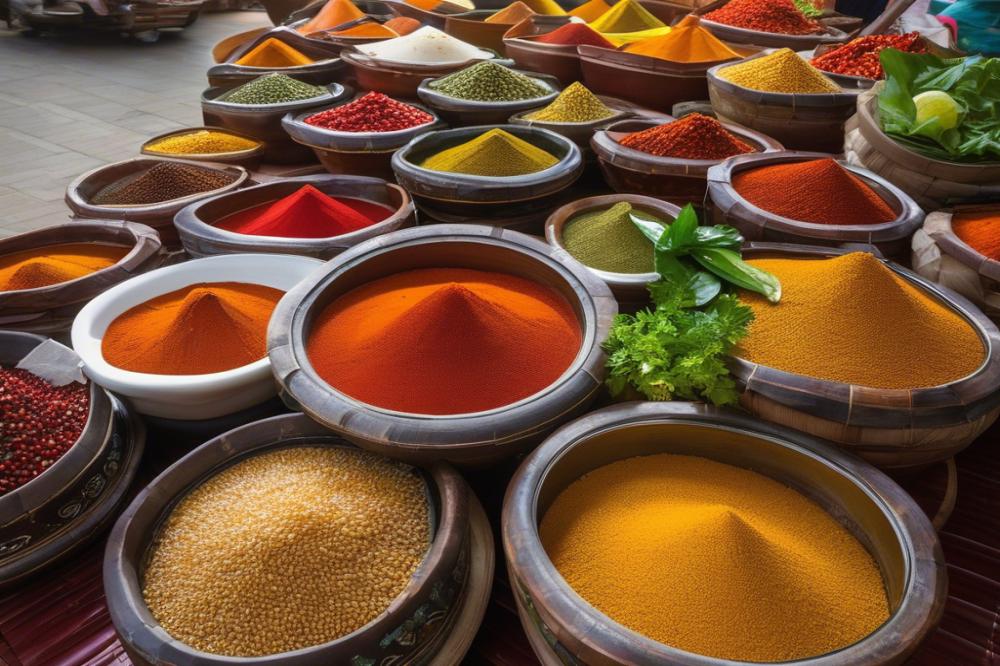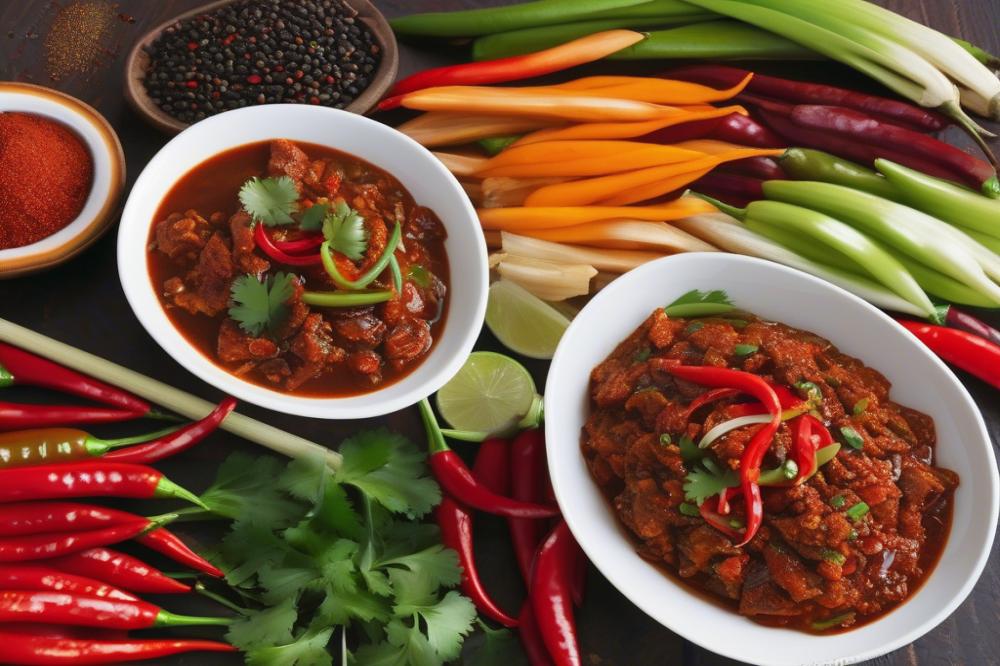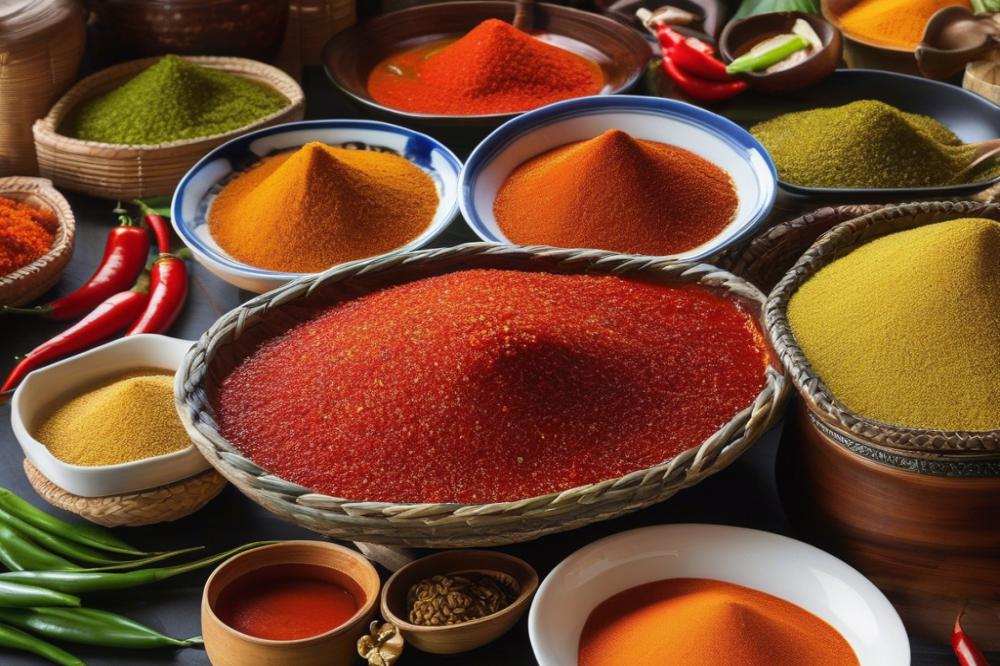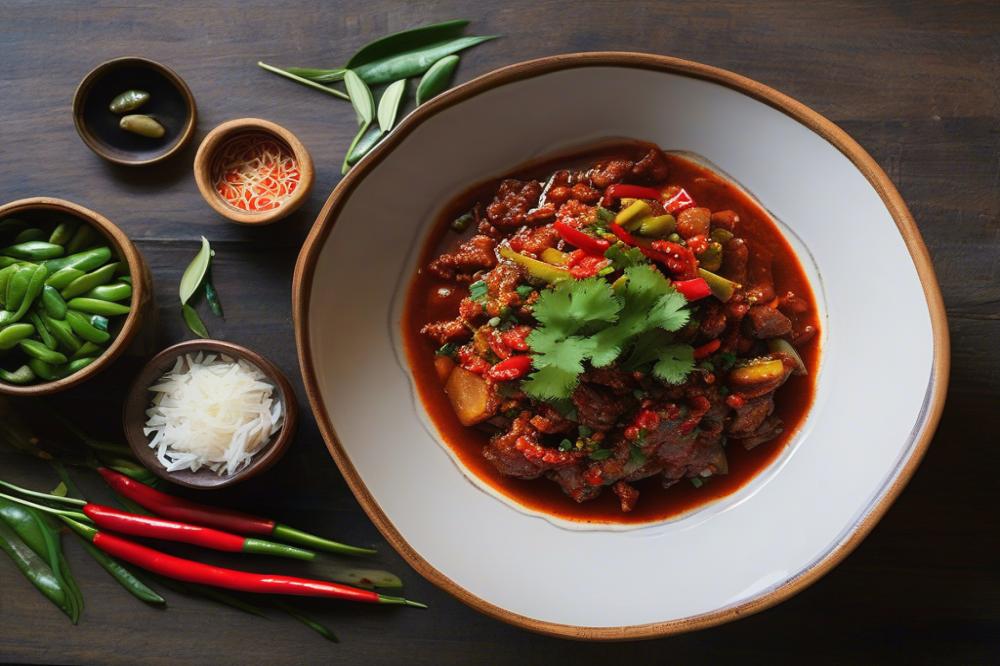Introduction
Malaysian cuisine is a rich tapestry of flavors and textures that reflect the country’s diverse cultural heritage. Various influences blend together, creating unique dishes that are bursting with life. Food in Malaysia often features an exciting mix of spices, herbs, and fresh ingredients. From the warmth of curry to the vibrancy of salads, each bite offers a delightful experience.
Sambal holds a special place in the hearts of many Malaysians. This chili-based condiment is not just a side dish but an essential component of countless meals. It brings heat and depth to recipes, transforming simple foods into something extraordinary. For many, sambal is synonymous with comfort and tradition, making it a staple in Malaysian households.
One of the key versions of sambal is Sambal Tumis, a spicy sauce that highlights the kick of chili paste combined with garlic and onions. Cooking this sauce involves a stir-fry process that enhances its flavor, creating a base for numerous dishes. Whether served with rice or as a marinade, this Malaysian chili sauce elevates the culinary experience to new heights. Recipes for Sambal Tumis vary, yet the core elements remain the same, making it a versatile addition to any kitchen.
Sambal Tumis: The Heart of Malaysian Cooking


In the landscape of Malaysian cuisine, sambal tumis stands out as a vital component. It serves as a spicy sauce that enhances various dishes with its bold flavor. This chili paste is more than just a condiment; it’s a cooking staple in many Malaysian households. From stir-fries to dips, sambal adds depth and excitement to every meal.
Culture plays a significant role in the evolution of sambal. Each region in Malaysia has its version, showcasing local ingredients and tastes. While the base often includes chili, there are many variations that highlight garlic, onions, and other spices. These differences reflect the rich culinary diversity within the country. Preparing sambal is often a communal activity, bringing families together to share in the cooking experience.
Sambal tumis differs from other kinds of sambal in its depth of flavor and cooking technique. Unlike simpler sambals, which may be raw and fresh, sambal tumis involves frying the ingredients until they meld into a smooth paste. This process elevates its taste, making it more complex. Many chefs and home cooks breathe life into their own variations, navigating the balance between spice and flavor. While chili remains the star, each recipe may emphasize different ingredients based on personal or regional preferences.
Ingredients and Cooking Instructions


List of Ingredients with Quantities
- 10 red chilies (fresh or dried)
- 3 tablespoons cooking oil
- 6 cloves garlic, minced
- 2 medium onions, chopped
- 1 tablespoon shrimp paste (belacan)
- 1 teaspoon tamarind paste
- 1 teaspoon sugar
- Salt to taste
Step-by-Step Cooking Instructions
Begin by preparing the red chilies. Remove the stems and seeds to control the heat level. For those who enjoy a bolder flavor, using fresh chilies adds brightness, while dried chilies can deepen the taste.
Next, blend the chilies, garlic, and onions into a fine paste. This combination forms a vital base for the spicy sauce. A food processor or a mortar and pestle works well for this task.
Heat the cooking oil in a pan over medium heat. Once the oil is hot, introduce the chili paste. Sauté this mixture until it becomes fragrant. The aroma will fill your kitchen and hint at the delicious dish to come.
Stir in the shrimp paste, tamarind paste, sugar, and salt. These elements elevate the dish, adding layers of flavor. Take care to mix thoroughly, allowing each ingredient to blend seamlessly.
Continue cooking the sauce until it thickens and the oil separates from the mixture. The desired consistency is essential; it should be thick enough to cling to food but not too oily. This is where the magic happens, and the sambal comes to life.
Serve the sambal as a condiment or as a base for other dishes. It pairs well with rice, grilled meats, or stir-fried vegetables. Enjoy the essence of Malaysian cuisine in every bite!
Nutritional Information


When creating a delicious sambal tumis, it’s essential to consider the nutritional values of its ingredients. This spicy sauce is not only flavorful but also packs a nutritional punch. Let’s break down the key components found in this Malaysian cuisine. Each ingredient contributes to the overall health benefits.
Starting with the calories, the entire recipe generally contains around 150 to 200 calories per serving. This count varies based on exact ingredient amounts. In terms of protein, the total can reach up to 3 grams. Ingredients like garlic and onions have minor contributions, but they are part of the mix.
Fats are also present in the dish. Usually, the sambal contains about 10 to 15 grams of fats. Most of these come from cooking oil. This is significant for those who monitor their fat intake.
Carbohydrates are another important component. The total can be around 10 grams per serving, with most of these coming from onions and the chili paste. Fiber is found in smaller amounts, usually around 1 to 2 grams. This offers some digestive benefits.
Vitamins and Minerals
This vibrant sauce also brings various vitamins and minerals to the table. Onions provide vitamin C, crucial for the immune system. Similarly, garlic has vitamin B6, which supports metabolism and brain function.
Moreover, sambal is rich in potassium, particularly due to the use of fresh ingredients. Potassium is vital for maintaining healthy blood pressure levels. Many of the spices used can also offer trace amounts of iron and calcium, adding to the dish’s nutritional value.
When enjoying sambal tumis, remember that every ingredient adds more than just flavor to the spicy sauce. They also contribute to a well-rounded diet. The cooking process captures the essence and nutrition, making it an excellent addition to meals.
Serving Suggestions and Pairings
Pairing Sambal Tumis with various dishes can elevate any meal. Rice is a classic choice. The spicy sauce complements plain steamed rice beautifully, creating a delightful balance. Noodles also work well, especially stir-fried varieties. The chili paste can become a star ingredient in fried noodles, adding depth and intensity.
Grilled meats taste even better with a side of sambal. Whether it’s chicken, beef, or seafood, the flavors mix wonderfully. Adding it to marinated meats before grilling can enhance their taste. Vegetables are not left out either. stir-fry some veggies in garlic and onions, and finish off with this spicy sauce for a colorful, flavorful dish.
Ideas for Using Sambal Tumis in Everyday Meals
There are creative ways to incorporate sambal into daily cooking. Consider adding it to omelets for a breakfast with a kick. Mixing it with mayonnaise or yogurt can create an exciting dip for snacks. The combination of creaminess with heat is delightful.
Using sambal as a base for marinades is another effective idea. Just blend it with some soy sauce and a sprinkle of sugar. This simple recipe will create a lip-smacking marinade for any protein. Spread it on sandwiches for a zesty surprise that will wow your taste buds.
Variations and Adaptations of the Sambal for Different Tastes
There are many variations to suit palate preferences. For those who enjoy a milder flavor, reducing the amount of fresh chili peppers is advisable. Some may prefer a sweeter sambal; adding a bit of brown sugar or palm sugar can transform the taste. Texture can also change; consider blending in additional ingredients like roasted peanuts for a crunch.
Making sambal with different herbs can provide unique twists. Try adding fresh basil or cilantro for an herby kick. Experimenting with citrus zest can also brighten up the flavors, making it more refreshing. Each variation opens up new possibilities, allowing everyone to enjoy their own version of this cherished Malaysian cuisine.
Closing Thoughts
The role of Sambal Tumis in Malaysian cuisine cannot be overstated. This dish serves as a vibrant symbol of the country’s rich culinary heritage. Its bold flavors and spicy sauce are fundamental to many meals, bringing zest to a variety of dishes. From family dinners to street food stalls, this sauce adds a signature touch that makes meals unforgettable.
Now, imagine preparing this delightful condiment right in your own kitchen. Trying the recipe at home is not just rewarding; it’s fun too. You can adjust the heat level and ingredients to match your personal taste. Gather some fresh chilies, garlic, and onions, and you’re well on your way to whipping up a home-cooked version of this popular stir-fry.
Finally, don’t stop at just one recipe. Malaysian cuisine boasts an incredible variety of flavors and dishes. From laksa to rendang, there’s so much more to explore. Each dish reflects the diverse cultural influences that make up Malaysia. Dive into this culinary adventure and celebrate the unique flavors of this beautiful country.



